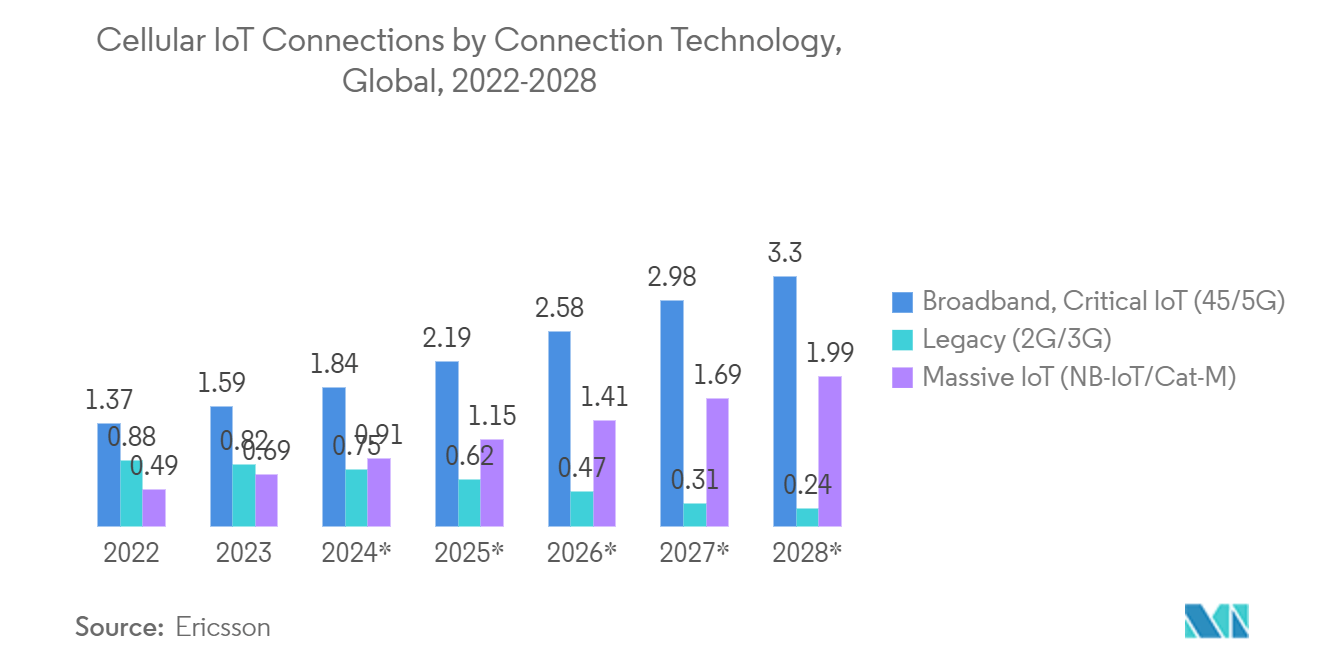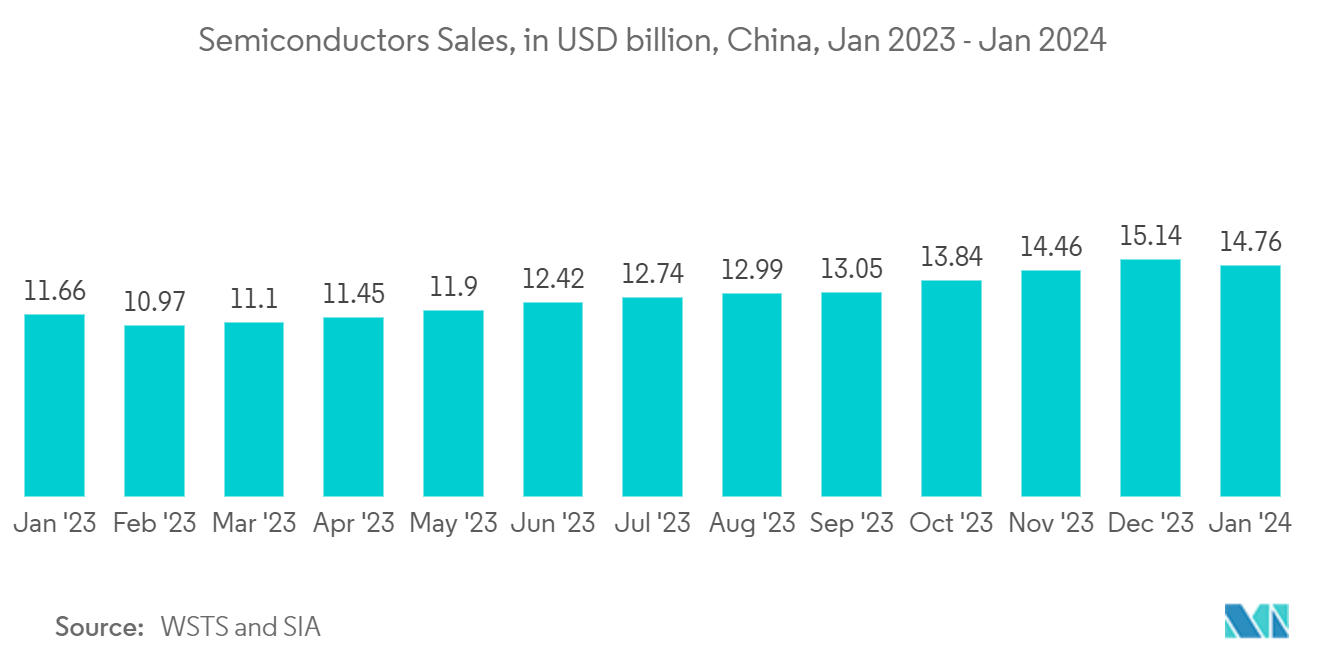Market Trends of Advanced IC Substrates Industry
Mobile Devices and Consumer Electronics to Hold Major Market Share
- The demand for mobile communication devices and consumer electronics is pushing manufacturers of mobile and consumer electronics to create products that are smaller and more portable. The growing trend of miniaturization is driving demand for advanced packaging.
- The increasing functionality of mobile devices and consumer electronics products, as well as the growing popularity of smart devices and smart wearables, are some of the major factors anticipated to drive the adoption of advanced IC substrates during the forecast period. The increasing adoption of cutting-edge technologies like AI and HPC and high-performance mobile devices (including 5G) drives demand for advanced IC substrates.
- Furthermore, smartphones command a significant share of the market, and with the advent of 5G smartphones, the demand is expected to increase even further. Global companies, like Samsung, are increasingly investing in the semiconductor business to become prominent smartphone vendors in the 5G smartphone space. In January 2022, China's shipments of smartphones compatible with 5G networks increased by 63.5% to 266 million in 2021 as falling prices boosted demand, according to the report by the China Academy of Information and Communications (CAICT). The report also stated that 5G smartphone shipments accounted for 75.9% of Chinese shipments, higher than the global average of 40.7%.
- The increasing adoption of smart wearables, like smartwatches and fitness bands, and their increasing functionality are also expanding the growth of the mobile and consumer segments. According to Ericsson, the number of cellular IoT connections with critical IoT and broadband worldwide in 2022 was 1.5 billion. By 2028, the forecast is that the number of cellular IoT connections with the same connection type will continue to rise steadily each year up to 3.3 billion.
- Besides this, smart appliances are expected to see significant applications and observe growth in their sales during the forecast period, owing to the increasing penetration of smart homes. Many consumer electronic companies are also increasing their investments in the market studied to develop more energy-efficient ICs.

China to Witness Significant Growth
- China's IC industry is expected to witness rapid growth in the coming few years while calling for increasing R&D input and strengthening independent innovation as part of the broader objective to establish a relatively complete semiconductor industry chain system.
- According to WSTS and SIA, semiconductor sales in China reached 14.76 billion USD in January 2024. The January 2023 figure is a significant increase from the month of January in 2023 where sales in China reached 11.66 billion USD.
- Moreover, as per a report by CNBC in December 2022, China was working on a more than CNY 1 trillion (USD 143 billion) support package for its semiconductor industry, in a major step towards self-sufficiency in chips and to counter the United States' moves aimed at slowing its technological advances. Beijing has planned to roll out what is expected to be one of its most significant fiscal incentive packages, allocated over five years, mainly as subsidies and tax credits, to strengthen semiconductor production and research activities at home.
- Moreover, in March 2023, Thinktrans, a China-based manufacturer of IC substrates, was seeking to raise CNY 500 million to CNY 1 billion (USD 72.45 million to USD 144.9 million) in Series A funds. Thinktrans designs and manufactures IC substrates in-house and sells them directly to three groups of clients: IDMs, OSATs, and design houses. While most of the company's clients are based in Greater China, the CEO has also identified the US, Japan, and South Korea as potential markets for continued expansion.
- The growing emphasis on the semiconductor industry by the government of China is leading to an increase in demand for advanced IC substrates. The country has an aggressive growth strategy to meet 70% of China's semiconductor demand with domestic production by 2025. Additionally, the government's 14th Five-Year Plan (2021-2025) for technology independence also supports the objective.


